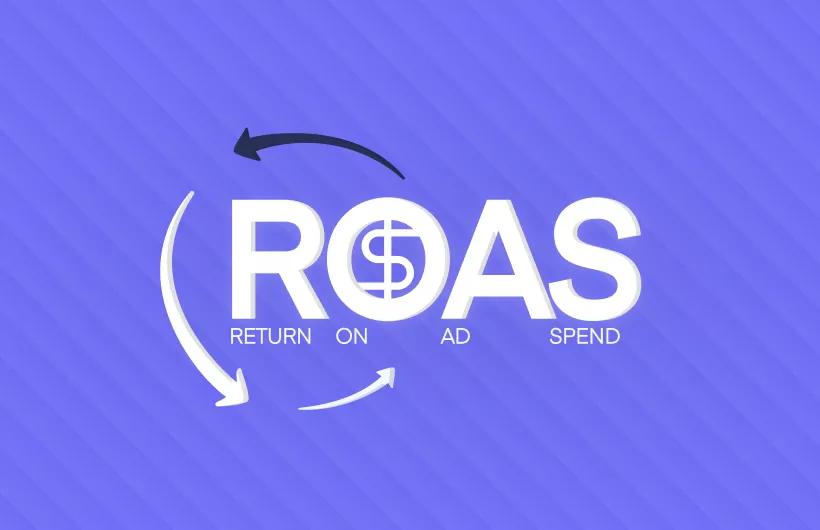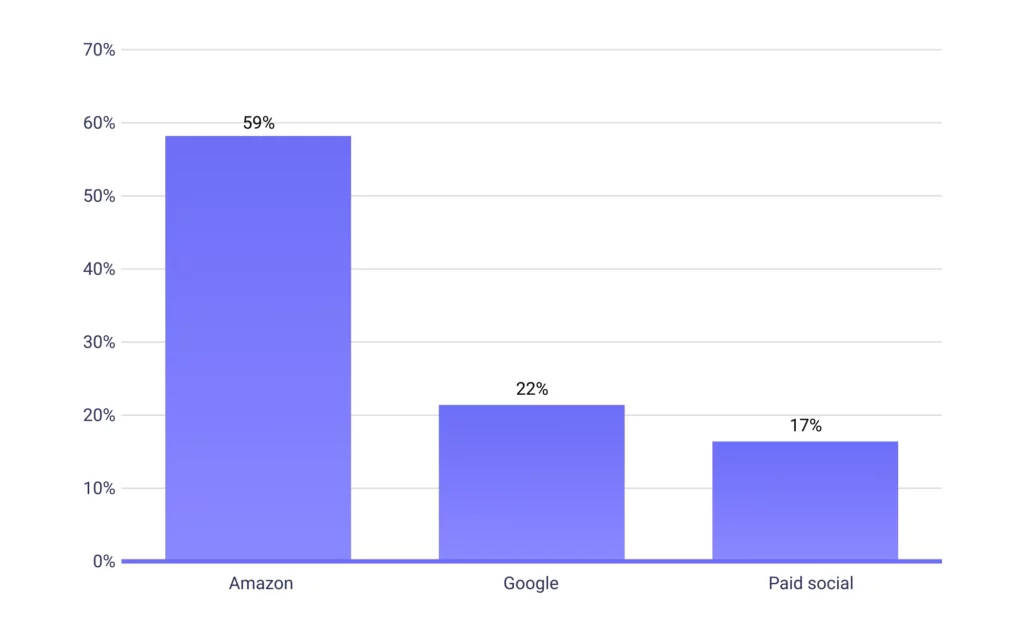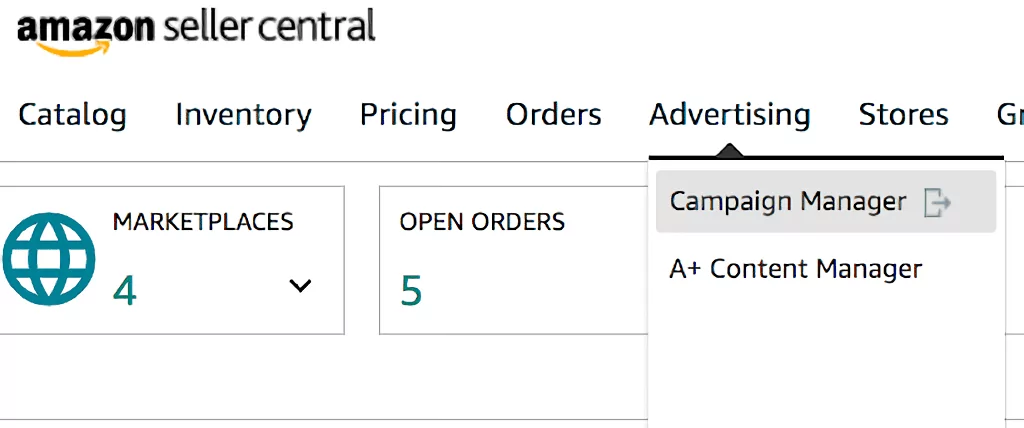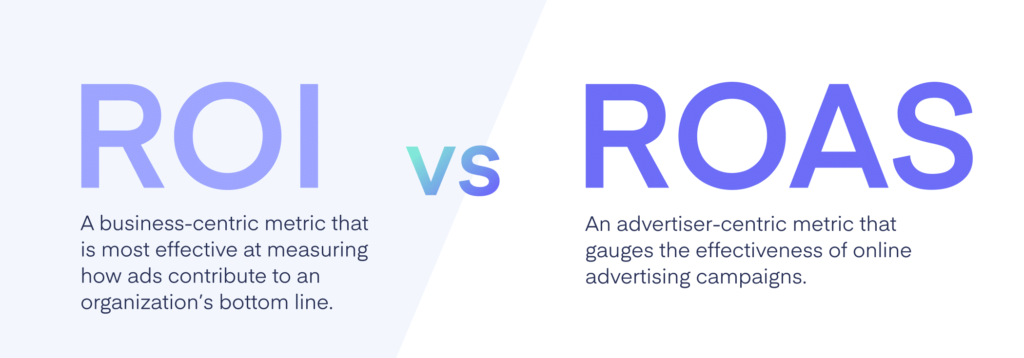
We’ve created a comprehensive guide about setting up an Amazon Seller Central account and starting the Amazon business right now.


What does ROAS mean, what is a good ROAS on Amazon, and how can Amazon sellers use it in their businesses? Let’s figure it out!
ROAS (Return on advertising spend) is a metric that allows sellers to calculate the amount of income (or loss) from each invested dollar and evaluate the productivity of a particular ad campaign or even a keyword.
Metrics such as impressions, clicks, and conversions are certainly useful when analyzing ad campaigns. However, they don’t say anything about the cost-effectiveness of ads. Relying only on them, sellers risk drawing erroneous conclusions about the payback of specific sources, channels, or campaigns.
ROAS helps Amazon sellers find out how profitable Amazon advertising is with the current method they’re using, which marketing techniques and tools are practical and can be employed in the future or should be abandoned for good. Another essential question that ROAS calculation can help answer is how to reallocate the marketing budget to boost revenue without increasing expenses.
The formula for Amazon ROAS calculation looks as follows:

In this formula:
For instance, a seller earned $1,000 from $250 of ad spend, meaning that the ROAS, in this case, equals 400%.
It is essential to understand that when calculating Amazon ROAS indicator, the budget for launching and maintaining campaigns is vital to take into account. Still, such additional costs as payment for the services of a designer, content writer, PPC specialist, delivery and product cost are not included.
By comparing the ROAS for several ad campaigns, sellers can determine which was most profitable ROAS (over 100%) and most unprofitable (less than 100%).

The more revenue and profits the ad campaigns generate, the higher is the ROAS. If a seller spent $100 on ads and was only able to earn $100 back in sales, the ROAS would be 1. This means that the seller made one dollar for each dollar spent in the ads — so the ad campaign is not profitable.
When it comes to what is a good return on advertising spend, it all depends on the profit margin. A general ROAS benchmark is a 4:1 ratio, but no number is appropriate for all businesses. Different companies have different benchmarks: 3x ROAS may be excellent for one brand but disastrous for another.
If the profit margin is low, a seller needs to ensure a higher ROAS for the ad campaign to remain profitable. The table below shows digital ad channels that generate the highest ROAS according to retail brands that sell on Amazon in the US (December 2019).

source: Statista
In turn, sellers with high margins can profit from a lower ROAS.
To figure out the minimum ROAS, a seller needs to calculate their break-even point. The break-even point is the gross profit before ad expenses. The break-even point is vital in business, as it allows sellers to determine when they have been able to recoup costs from a sale.
For instance:

That $20 dollar is the profit before ad spendings — the seller’s break-even point. If a seller has spent $5 for ads, then the net profit is $15.
Now, the minimum Amazon ROAS calculation is carried out as follows:

So, if the sale price is $50 and the break-even point is $20, the minimum ROAS is 2.5. This means that for each dollar spent on ads, a seller has to generate $2.5 to keep the ad campaign profitable.
Many businesses are going after a high Amazon ROAS. While that seems to be the consensus among sellers, it is worth noting that it would depend on their strategy. Aiming at high ROAS brings good results for selling low-converting products or products that don’t need high visibility. If a seller is trying to increase sales of low-selling stocks or wants to increase brand awareness and establish a solid presence in the niche, low ROAS might be a better option in such cases. This means investing heavily in advertising to get the highest chances of revenue.
There are four powerful tactics for ROAS enhancement.
Using relevant keywords will help draw in traffic and bring in more leads. This will increase conversion rate and decrease the cost of getting leads, which means the company will have more money to spend on its marketing strategy. Sellers use Amazon’s keyword tool to find the relevant keywords.
Relevant information is one of the essentials to a page’s success, especially if the company is constantly driving more leads to it. If a shopper searched for “scary Halloween masks”, the company’s listing has to include pertinent info to scary Halloween masks. If the Halloween masks are good (by good, we mean scary enough) and have accessible pricing points, customers will be interested enough to purchase them.
It is vital to include keywords in the title. In fact, titles have to be created out of keywords. Also, if the user searches for a scary mask, it is helpful to add relevant info about the mask that the store contains to the title.
The estimated bid amount is the average order value multiplied by conversion rate and divided by target ROAS. To drive Amazon advertising ROAS metric across all products, sellers have to regularly manage PPC campaigns to guarantee maximum ad spend. This entails correcting ineffective keywords, bids, ads, campaign types. And finally, a seller has to verify that their target ROAS is precisely what they expect of it — a driving force for reaching successful output.
To find ROAS metrics in the Amazon Seller Central, users need to head to Advertising and tap on the Campaign Manager.

Knowing the ROAS for each ad campaign can help sellers discover which is effective and which is useless.
Understanding the differences between ROAS and ROI (Return on investment) is very important. The fundamental difference between these two ratios is whether the company’s costs of doing business are taken into account in the calculations or not.
When calculating ROI, all costs (particularly margin) are taken into account, while ROAS calculation doesn’t take that into account. Simply put, the calculation of ROAS helps determine whether the business received more than it spent on advertising. At the same time, ROI indicates whether the company is able to get more profit taking into account the costs of the product/services and advertising.

At this very moment, many readers will likely consider Amazon ROAS calculation a waste of time. But it is far from that. First, it allows sellers to calculate ad campaigns’ profitability/loss ratio if they don’t have data on the difference between price and cost (margin) and ROI. Secondly, sellers can estimate at what ROAS the ad campaign will deliver the necessary indicators or proceed to zero.
Understanding Amazon ROAS metrics is vital for the ad strategy and its results as they showcase which ad campaigns are profitable and which are not paying off. If you want to know what is a good ROAS on Amazon for your business, our team will gladly help. So don’t hesitate to contact us!
Stay tuned for more helpful info!